Palmyra Township
Palmyra is another of the six original townships formed when Wayne County was established from a portion of Northampton County in 1798. It was reduced in size when Pike County was established in 1814 with the Wallenpaupack Creek serving as the dividing line and the portion with the old Paupack Settlement now in Pike. Its mass was again diminished in 1850 with the formation of Paupack Township and yet again on January 23, 1884 when the Borough of Hawley was incorporated and set off from the township. Palmyra is one of the smallest townships in the county.
The earliest settlements in the region were made at Wilsonville, occupying a position on what became the dividing line between the two counties, and in the area was to become became Pike County. It is believed that the first houses built in the area were on the Pike County side of the creek. Wilsonville was named after Judge James Wilson, a native of Scotland, who was one of the signers of the Declaration of Independence and, at the time the county was established, one of the judges of the Supreme Court. A man of great wealth, Wilson owned large tracts of land along the Wallenpaupack Creek on which he grew flax and hemp that he planned to use in the manufacture of fabric in the factory he erected near Hawley in 1792. Sadly the operation failed due to lack of sufficient quantities of flax and hemp resulting in the financial ruin of Judge Wilson. He died in Edenten, NC in 1798.
Wilsonville was chosen as the second seat of county government in 1799. Milford was the first in 1798 but it was changed to Wilsonville for what was to be a period of not more than three years while public buildings could be erected in Bethany which became the county seat in 1805. The county seat was changed to Honesdale in 1841 where it remains today. Wilsonville became just a memory when it was flooded as part of the construction of the Wallenpaupack Dam in 1924.
Prior to 1792 Reuben, Alpheus, and Alexander Jones, along with their sister Widow Cook settled below the mouth of Middle Creek. At about the same time Elisha Ames made a clearing on what later became known as the David Bishop farm, making them probably the first settlers in Palmyra Township, Wayne County. In a short time Benjamin Haines/Haynes arrived in the area. He became infamous as the murderer of an Indian named Canope to whom he had falsely offered the hand of friendship. Haines was extremely poor and his three sons had the dubious distinction of being the first children in the county who received their education at public expense under the law of 1809. This law made it the duty of the county commissioner to pay for the education of the children of indigent parents. In 1803 Jonathan Brink of Milford purchased the Haines property and erected one of the early sawmills just below White Mills.
By 1815 Jason Torrey, Abisha Woodward and Moses Killam purchased a tract of land a mile from Hawley and built a frame house that they called New Castle where they ran an extensive lumbering business for several years. The property was purchased by Joseph Atkinson who later sold it to Russell Daniels from Hartford, CT.
Among the early settlers at Wilsonville was Leonard Labar who kept a small tavern. He sold it in 1830 to John Roberts and Nathan Fuller and moved to Stroudsburg. A grist mill was built on the Wayne County side of the creek in 1810 and re-built by William Shouse of Easton. John R. Compton from New Jersey arrived in the area in 1803 and served as constable for many years. In 1827 Henry Harmon built a small mill near a quarry between Hawley and Wilsonville.
The school at Wilsonville was the first in the township. Alexander Reed was one of the first teachers. The second school, built in Hawley in 1823, was a plank structure with a slab roof. The only churches in the Palmyra Township area were all located in Hawley as of 1886.

Navigation


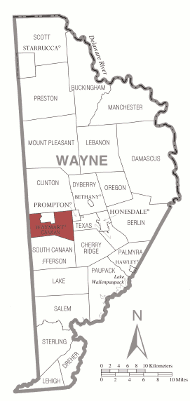
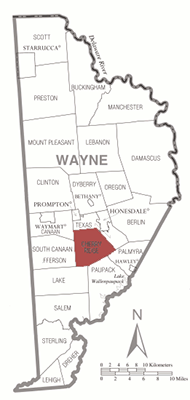
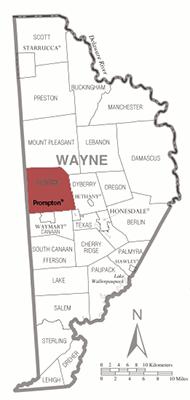


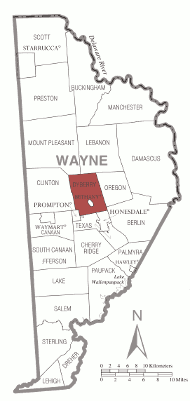


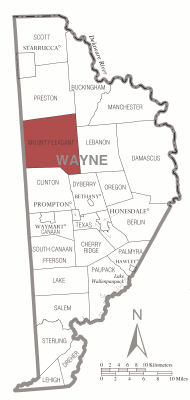




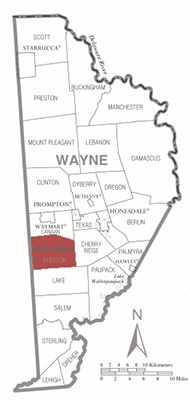
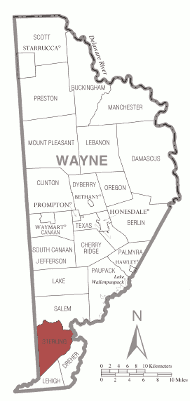
News and Events








